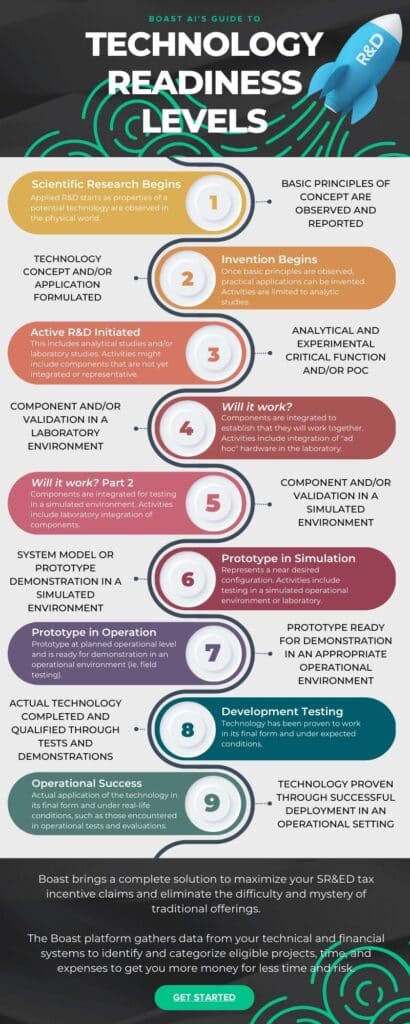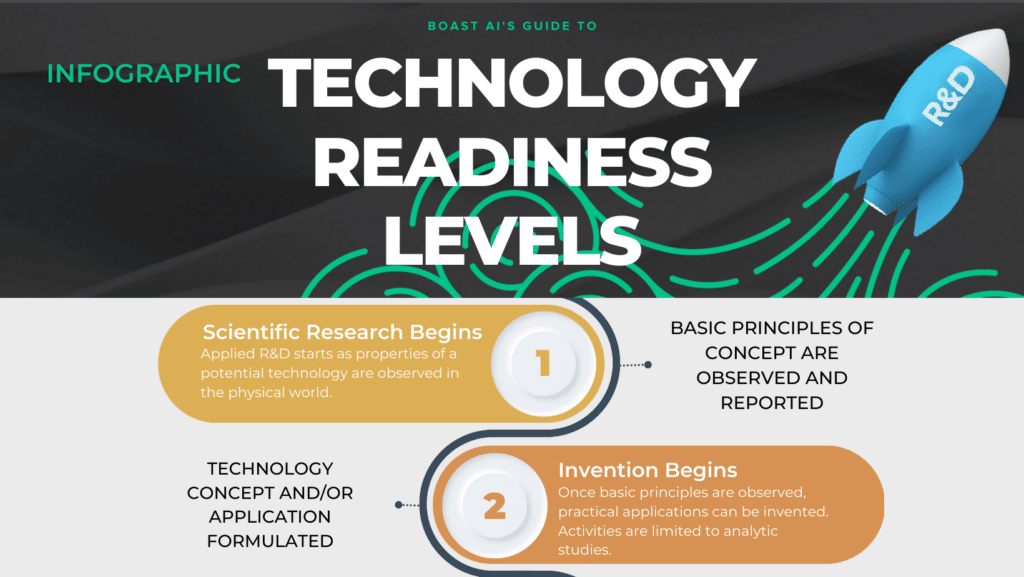Technology Readiness Levels (TRLs) are a widely-used measure of the technical maturity of a given innovation.
In the world of startups and funding, TRLs offer a way for both engineers and non-technical stakeholders alike to readily understand where along the Research, Development and Deployment path a proprietary technology stands on a scale of 1 to 9. A TRL 1 represents the start of research, while TRL 9 describes a fully-productionalized technology.
Although the TRL scale was first developed by NASA to help qualify the progress of space exploration technologies, the framework has been adopted globally, including by the European Union and the Canadian federal government. What’s more, the qualifying criteria is largely consistent for TRL grading across all regions.
As a result, TRLs have become a common measure for internal development teams the world over, helping them understand things like timing for a product roadmap or resource planning for their next phase of R&D.
TRLs have also become a pivotal tool used for capital planning and finance strategy, whether startups are angling for government grants—which use TRL as a qualifying criteria for specific programs—pitching their innovation for venture capital funding, or preparing their organization for an acquisition.
Regardless of whether innovative businesses are leveraging this information for equity or not, it’s important that founders, CFOs and product leadership understand what goes into each TRL, and the due diligence involved in graduating from one TRL to the next.

Determining funding eligibility
In Canada specifically, the government breaks the nine TRLs into four broader technology development stages, including:
- Fundamental Research (TRL 1-2)
- Research and Development (TRl 3-5)
- Pilot and Demonstration (TRL 6-8)
- Early Adoption (TRL 9)
These are especially useful for businesses leveraging government funding in the forms of tax credits and grants in Canada, as these stages are considered shorthand to identify the maximum and minimum amounts of funding a given organization might qualify for.
There’s also the Industrial Research Assistance Program (IRAP), which offers advisory services and financial assistance to fuel Canadian innovation, broadly targeting earlier-stage SMBs to help ensure their innovation meets commercial targets.
Funds from IRAP are generally capped around $150,000, with exceptions made on a case-by-case basis, but are available for businesses that are:
- Incorporated and profit-driven Canadian SMBs
- 500 or fewer full-time employees
- Organizations committed to developing and commercializing innovative and technology-driven new or improved products, services or processes in Canada.
To qualify, businesses have to meet the requirements above while also working directly with a local Industry Technology Advisor to craft their innovation narrative, which includes detailing past, current and projected TRL status.
Boast brings a complete solution to maximize your tax incentive claims and eliminate the difficulty and mystery of traditional offerings. Your data—and lots of it—is the key to a more accurate claim. Boast securely integrates with hundreds of other systems to make capturing and qualifying your SR&ED investments easy, and real-time. Request a demo with the team today to get started.









